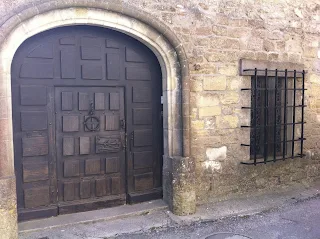Visiting Salvador Dali's Home Town in Figueres (Spanish Catalonia) with Savvy Mom Ruth Paget
Figueres, Spain is a nearby outing in the Catalan Pyrenees mountains from Barcelona or the Languedoc-Rousillon region of Spain.
Figueres is sought out, because it is the childhood home of
Spanish artist Salvador Dali (1904 – 1989), and the site of the Dali Theater
and Museum. The Surrealist exhibition
and performance space was converted from a Neoclassical building built by Jose
Roca i Bros in 1850. According to
Michelin’s Guide Vert Rousillon Pays
Cathar, the glass cupola over the theater was built by Emilio Perez Piñero.
I like Dali’s satiric and critical artwork, but I also went
to Figueres with my husband to help Spain’s economy. When we visited in the summer of 2015,
official youth unemployment hovered around 50%.
The Spanish are working themselves out of this fiscal crisis
by maximizing attendance at tourist venues I think. We arrived at the Dali Museum at opening time
and the line wound around the streets with an hour wait. Busloads of tourists were loading more people
into the streets. It is okay to wait
when you are part of a group and the distress is part of the trip story
experience. I was already considering a
postcard visit.
I was a little distressed by the admission price. The Guide
Vert listed admission at 13 euros.
The Museum’s website listed admission at 14 euros. The price listed with a sign posted at the
Museum’s door was 20 euros. You could
get into the Louvre with a few more euros added to the 20 euros. Dali would have loved this huckstering to get
the economy back in shape.
I wanted to spend my money on souvenirs, so I said, “Let’s
just get pictures to say we’ve been here” to my husband. He agreed, because he was probably thinking
of what parking was costing us.
The decoration of the Dali Museum is wonderful for
photos. Dali topped the Neoclassical
building with large egg sculptures and put pastry puff decorations on an orange
background to make it appear fairy-like.
It was a great photo op. We
discovered a way to reserve tickets several months in advance if you speak
Spanish or Catalan, too, on the side of the Museum rarely stopped at by
tourists running to get in line.
Then, we went to some souvenir shops. The paucity of choices attested to the bad
state of the Spanish economy. Only
posters, calendars, and postcards were on sale.
We bought calendars and many postcards.
I bought a postcard of Dali’s The Temptation of Saint Anthony.
It is not at Figueres, but in the Royal Art Museum in Brussels,
Belgium. (I have seen it. Temptation, as usual, takes the form of a nude
woman.) Art books and guidebooks are
expensive to produce. T-shirts are
relatively expensive to make in a depressed economy.
I thought of something that might boost the local economy,
though, as we went back to the parking garage.
My idea deals with beating the heat, hydrating tourists in sweltering
weather, and feeding tourists; sell chilled, bottled gazpacho vegetable soup
along the line to get in the museum.
Make the bottles plastic to avoid breakage problems. You can also recycle plastic for money. Roving refrigerated carts could sell the
gazpacho like ice cream carts do in Hispanic neighborhoods in California. Eventually, other tourist items and recycle
carts could be added.
Gazpacho is made with vegetables, olive oil, bread, and ice
and crushed into a refreshing drink. The
green pepper and cucumber disagree with some people. Otherwise, the cold soup is halal, kosher,
vegetarian, and vegan. A gluten-free
version can be made without bread.
And, that is my little token of appreciation to the Dali
Museum in Figueres, written Figueras in Catalan, for a ride through the
mountains to fairy-like, Dali-Land.
When my husband Laurent and I returned to Monterey, California from Europe, we loved finding out that there was a Dali Museum on the wharf in Monterey. Dali spent several years in Monterey and painted and organized lavish parties around California. His paintings of parties and curiosities from this period in the museum make it an unexpected outing for a trip to Monterey, California.
By Ruth Paget - Author of Eating Soup with Chopsticks and Marrying France
Click here for: Ruth Paget's Amazon Books
Click here for: Ruth Paget's Amazon Books
 |
| Photo by Laurent Paget |







